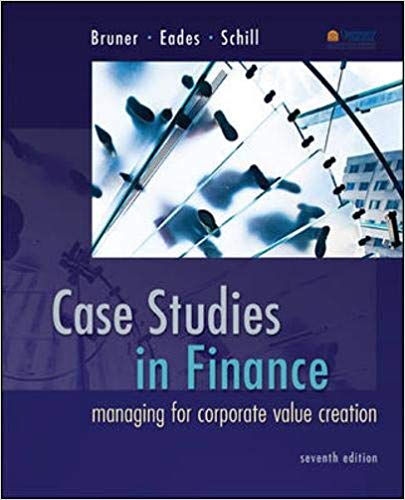1. What is an IPO and why is it such a big deal? Is this a good...
Question:
1. What is an IPO and why is it such a big deal? Is this a good idea for JetBlue?
2. What do you think JetBlue stock is worth?
3. Does the financial forecast in case Exhibit 13 seem reasonable? What are the key assumptions? Is the length of the forecast period reasonable?
4. What discount rate is appropriate for the cash-flow forecast?
5. What was your approach for terminal value? How do your terminal-value assumptions affect the estimated value of JetBlue shares?
6. What are the pros and cons of using a comparable-multiple approach in valuation?
This case examines the April 2002 decision of JetBlue management to price the initial public offering of JetBlue stock during one of the worst periods in airline history. The case outlines JetBlue’s innovative strategy and the associated strong financial performance over its initial two years. Students are invited to value the stock and take a position on whether the current $25–$26 per share filing range is appropriate. The case is designed to showcase corporate valuation using discounted cash flow and peer-company market multiples. The epilogue details the 67% first-day rise in JetBlue stock from the $27 offer price. With such a backdrop, students are exposed to one of the well-known finance anomalies—the IPO underpricing phenomenon—and are invited to critically discuss various proposed explanations.
The case provides opportunities for the instructor to develop any of the following teaching objectives:
- Review the institutional aspects of the equity issuance transaction.
- Explore the costs and benefits associated with public share offerings.
- Develop an appreciation for the challenges of valuing unseasoned firms.
- Hone corporate valuation skills, particularly using market multiples.
- Evaluate the received explanations of various finance anomalies, such as the IPO underpricing phenomenon.
What is Discounted Cash Flows? Discounted Cash Flows is a valuation technique used by investors and financial experts for the purpose of interpreting the performance of an underlying assets or investment. It uses a discount rate that is most... Discount Rate
Depending upon the context, the discount rate has two different definitions and usages. First, the discount rate refers to the interest rate charged to the commercial banks and other financial institutions for the loans they take from the Federal...
Step by Step Answer:

Case Studies in Finance Managing for Corporate Value Creation
ISBN: 978-0077861711
7th edition
Authors: Robert F. Bruner, Kenneth Eades, Michael Schill





